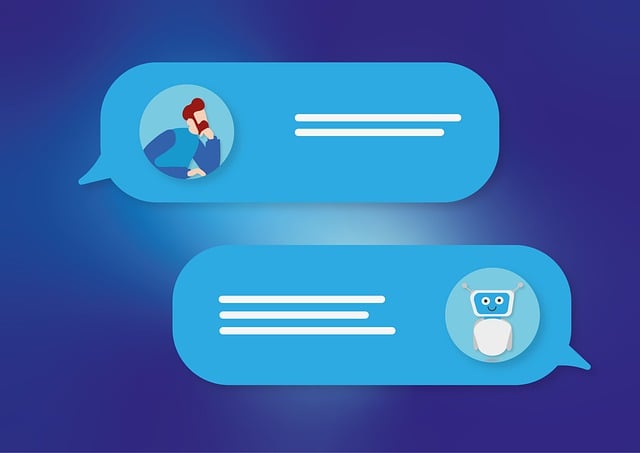AI chatbots, despite their neutral appearance, can exhibit biases from training data and algorithms, leading to unfair outcomes. To ensure fairness, it's crucial to analyze training data for representation and skews, scrutinize data sources, algorithms, and chatbot responses. Developers must curate inclusive datasets, implement transparent algorithms, and conduct rigorous testing to address biases. Equal access to AI chatbots and continuous monitoring are essential for long-term equity. Ethical considerations, user feedback loops, and iterative improvement are vital for creating fair and accessible AI chatbot technologies that serve all users equitably.
In the rapidly evolving world of AI chatbots, ensuring fairness is paramount. As these algorithms shape our interactions with technology, biases inherent in data or design can lead to discriminatory outcomes, exacerbating existing social disparities. This article explores key strategies for fostering fairness in AI assistants, from understanding and mitigating bias in chatbot development to continuous monitoring and integrating ethical considerations. By delving into data collection, algorithm design, access, and user feedback, we aim to promote transparent, accountable, and equitable AI chatbot technologies.
- Understanding AI Chatbot Bias: Unveiling Potential Predjuges
- Data Collection and Representation: The Foundation of Fairness
- Algorithm Design: Promoting Transparency and Accountability
- Mitigating Disparities: Ensuring Equal Access and Outcomes
- Continuous Monitoring and Evaluation for Long-Term Fairness
- Ethical Considerations and User Feedback Loops
Understanding AI Chatbot Bias: Unveiling Potential Predjuges

AI chatbots, despite their seemingly neutral nature, can exhibit biases that reflect the data they are trained on and the algorithms they use. These biases can lead to unfair or discriminatory outcomes in various ways, from reinforcing stereotypes to marginalizing certain groups. Understanding this potential for bias is a critical first step in ensuring fairness. By examining the training data for representation and skews, researchers and developers can identify and mitigate biases that may be inadvertently built into these systems.
Unveiling these prejudices requires careful analysis of both the content and context within which AI chatbots are trained and deployed. This includes scrutinizing the sources of data used to train them, the algorithms employed for processing that data, and the responses generated in different scenarios. Recognizing and addressing chatbot biases is essential for creating more equitable and responsible AI technologies that serve all users fairly.
Data Collection and Representation: The Foundation of Fairness

The foundation of any AI assistant’s effectiveness and fairness lies in the data it is trained on—a crucial aspect often referred to as data collection and representation. This initial step involves gathering vast amounts of information relevant to the task at hand, be it language understanding or image recognition. However, the potential for bias creeps in here if not carefully managed. For instance, an AI chatbot trained on historical data might perpetuate existing societal biases present in that data, leading to unfair outcomes.
To ensure fairness, developers must strive for diverse and inclusive datasets, meticulously curating content from various sources to represent all relevant demographics. This process involves careful consideration of the data’s representation, ensuring it captures the nuances and variations within human experiences. By addressing these foundational challenges, AI chatbots can be designed to serve a broader user base, delivering more equitable and unbiased assistance.
Algorithm Design: Promoting Transparency and Accountability

In designing AI chatbot algorithms, promoting transparency and accountability is paramount. This involves making the decision-making processes of these systems clear and understandable to users and developers alike. Transparent algorithm design ensures that the criteria for generating responses are known, enabling stakeholders to scrutinize and validate the fairness and accuracy of the AI’s outputs.
Furthermore, accountability measures must be implemented to hold the algorithms and their creators responsible for any biases or inaccuracies. This includes rigorous testing, regular audits, and continuous monitoring to identify and rectify disparities in the AI chatbot’s performance over time. By prioritizing transparency and accountability, developers can foster public trust and ensure that these powerful tools serve all users equitably.
Mitigating Disparities: Ensuring Equal Access and Outcomes

In the pursuit of fairness in AI chatbot algorithms, mitigating disparities is a critical component. This involves ensuring equal access to these advanced technologies for all users, regardless of their background or circumstances. It’s crucial to address any existing biases that could lead to unfair outcomes based on factors like race, gender, or socio-economic status. Developers and implementers must employ diverse datasets and rigorous testing to identify and rectify these biases early in the development process.
Equal access translates into equitable opportunities for interaction with AI chatbots, fostering inclusive environments where everyone can benefit from these innovative tools. By focusing on fairness, developers can create AI chatbots that not only provide accurate information but also respect user privacy, avoid perpetuating stereotypes, and promote positive social interactions. This ensures that the advancements in AI chatbot technology are felt across society, enhancing accessibility and reducing digital divides.
Continuous Monitoring and Evaluation for Long-Term Fairness

Ensuring fairness in AI assistant algorithms requires continuous monitoring and evaluation, particularly for long-term fairness. As AI chatbots evolve and interact with diverse users, their performance metrics must be regularly audited to identify and mitigate any biases that may emerge over time. This involves rigorous testing across various demographic groups, including those underrepresented in the training data, to ensure equitable outcomes.
Moreover, ongoing feedback loops from users can provide valuable insights into potential fairness issues. By integrating user reports and performance analytics, developers can promptly address discrepancies and adjust algorithms accordingly. Such proactive measures not only maintain but enhance the fairness of AI chatbot interactions, fostering trust and reliability among all users.
Ethical Considerations and User Feedback Loops

In developing AI chatbot algorithms, ethical considerations are paramount. These include ensuring transparency in how the AI makes decisions and preventing any form of bias that could lead to unfair outcomes. Developers must carefully curate the training data to eliminate discriminatory patterns and ensure a diverse representation of user inputs. This process is crucial for creating an AI chatbot that serves all users equitably.
User feedback loops are another critical aspect of maintaining fairness. Incorporating user feedback allows for continuous improvement by identifying and rectifying any biases or inaccuracies that may arise. By actively listening to user experiences and preferences, developers can refine the algorithm, making it more responsive to a broader range of needs. This iterative approach not only enhances the AI chatbot’s performance but also promotes fairness by reflecting the varied expectations and requirements of its users.






